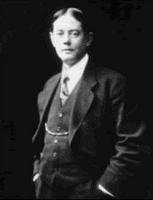










James Homer Wright (1869-1928), the eldest son of a Pittsburgh glass merchant, was educated in Baltimore and practiced pathology in Boston from 1893 until his death in 1928. In 1896, when not quite 27 years old, he assumed directorship of the newly founded Pathology Laboratory at the Massachusetts General Hospital, a post he held for the next 30 years. He is remembered eponymously by the blood cell stain that bears his name and the Homer Wright pseudorosettes of neuroblastoma, but he made many additional contributions to pathology.
These include the following: determination of the cellular lineage of multiple myeloma, identification of the megakaryocyte as the cell of origin of blood platelets, recognition of the cell of origin of the neuroblastoma, demonstration of spirochetes in syphilitic aneurysms of the aorta, and clarification of misconceptions about actinomycosis.
Additionally, Wright coauthored, with Dr. Frank B. Mallory, the book Pathological Technique, which was a staple of laboratories for >40 years and exemplifies Wright's wide-ranging interests in, and contributions to, practical aspects of pathology including staining, culture and frozen section techniques, photography, and development of the rotary microtome. He received Honorary Doctor of Science Degrees from Harvard University, the University of Maryland (his alma mater), and the University of Missouri. He was the recipient of the Gross prize in 1905 for his publication on actinomycosis and the Boylston Medical Prize in 1908 for his discovery of the origin of platelets, and he was inducted into the American Academy of Arts and Sciences in 1915. Although shy and somewhat austere in the workplace, a different side was shown by his anonymously sending flowers to a young Norwegian opera singer whom he subsequently married. The pathology laboratories of the Massachusetts General Hospital were named the "James Homer Wright Pathology Laboratories" in 1956.
Today James Homer Wright is remembered and honored 100 years after his description of the stain that, along with the pseudorosettes of neuroblastoma, carry his name into eternity and ensure his great contributions will never be forgotten.